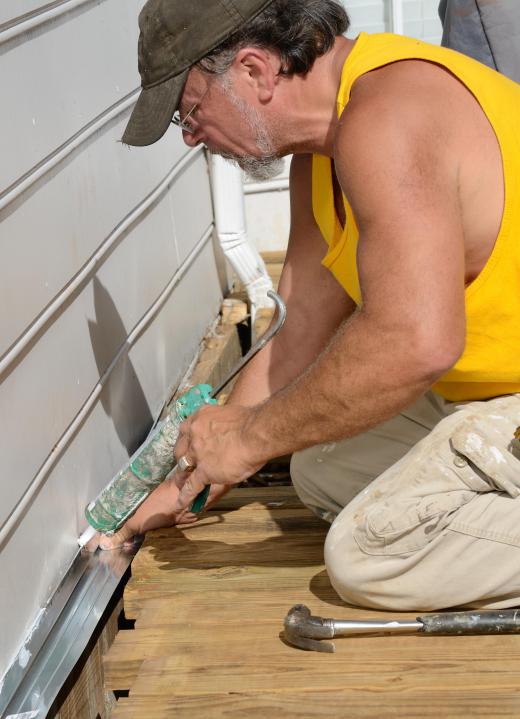A mirror mastic typically refers to a type of adhesive that is used to attach mirrors to walls and other surfaces. This can eliminate the need for a frame or other device to mount the mirror. It generally resists drying or cracking, and does not damage the lining of the mirror. Mirror mastic is usually available at home improvement stores, hardware shops, and glass and mirror stores.
Mastic adhesives are bonding agents. Some types of mastic are heavy-duty adhesives used in construction work, for tasks such as flooring and roofing. Mirror mastic is an adhesive that is specially designed for mirrors. Some products can attach mirrors to a wide variety of surfaces, such as wood, concrete, paint, and metal. Other types of mastic may be designed for specific types of mirrors, such as acrylic or plate glass.

Usually, mirror mastics work best at an ideal temperature of both the wall and the mirror. This temperature is usually stated on the packaging. Depending on the brand, mirror mastic is either applied to the back of the mirror or to the wall. It is also normally applied on surfaces that have already been cleaned of dust and dirt. The quantity of mastic used generally depends on two factors, the type of surface and the size and type of mirror that is to be mounted.
After the application of the mastic, it is generally recommended to mount the mirror to the wall as soon as possible. This is to help ensure that the adhesive bonds to the surface. During the bonding time, the mirror should also be fastened to the wall using clips or some other type of mounting device, to prevent it from falling down. The bonding time varies according to the type of mastic, however, it generally takes about 48 hours.
Mirror mastics can differ in terms of price, quality, and material. Many are asbestos and asphalt free products, which can be a good option for the health-conscious consumer. Other mastics will specify that they will not do damage to the wall surface, which can be something to consider if the homeowner wants to eventually change the location of the mirror. Many types are also designed so that the mastic will not damage the back of the mirror. They can also come in a variety of different colors, but the most common mastic color is black.
